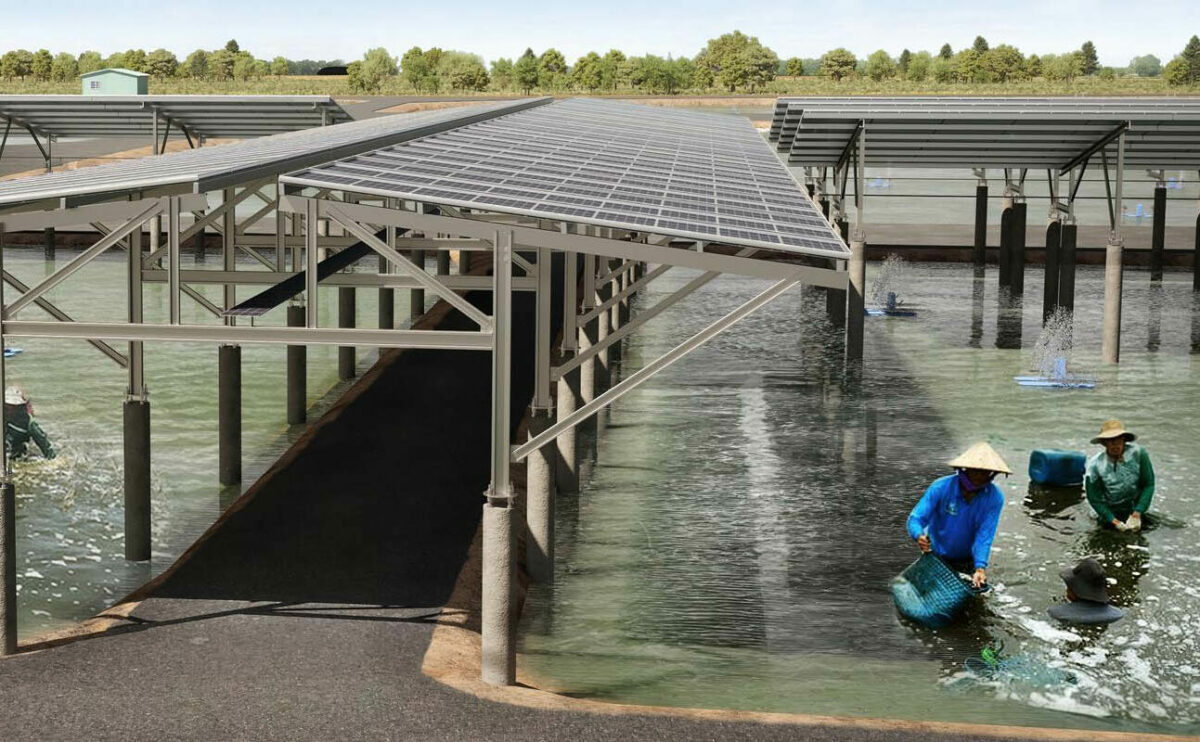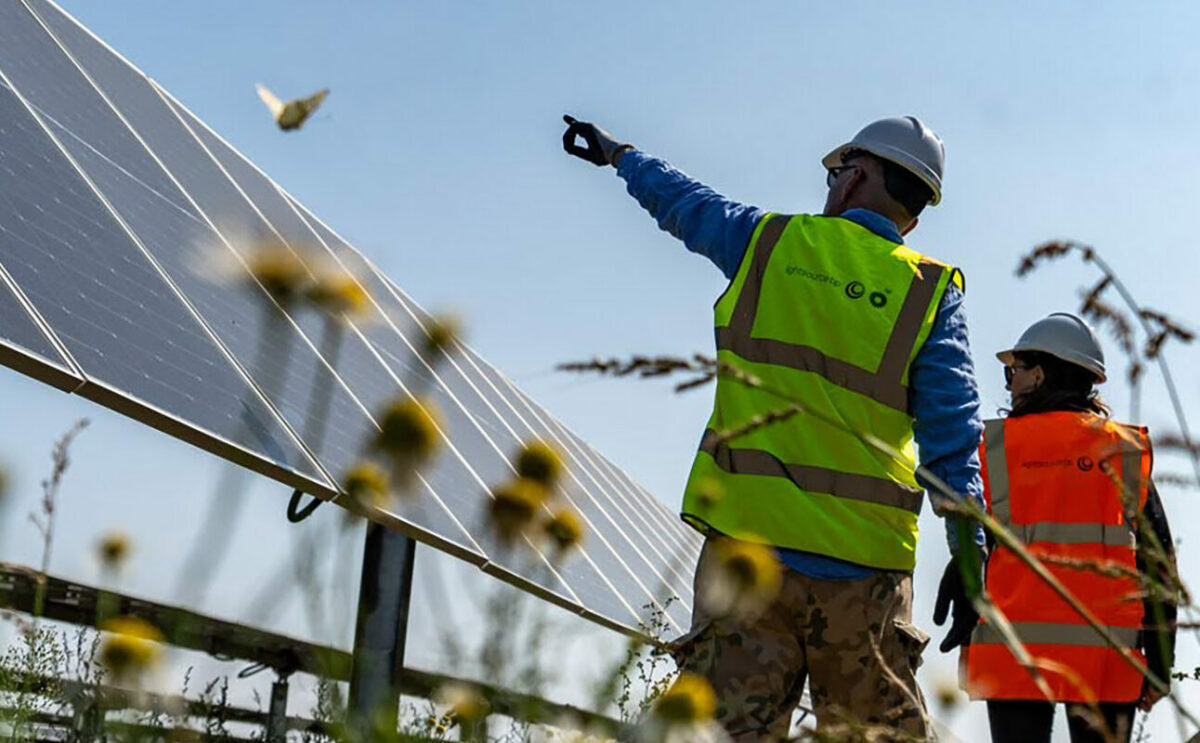What is Biodiversity Net Gain, and how will it help nature?
Nature is vanishing at an alarming rate. The world is estimated to have lost 69 percent of its wildlife populations since 1970. This is no less than a crisis, with biodiversity loss affecting public health, food security, and efforts to curb climate change.
How we can help reverse the trend
To address this, biodiversity loss must be reversed, not simply slowed down or stopped. In December 2022, leaders from over 200 countries gathered in Montreal, Canada, for the UN Biodiversity Conference. Responding to calls for more formal, quantifiable action to protect biodiversity, the conference agreed on a set of targets: to conserve 30 percent of the world’s land and oceans by 2030.
Lightsource bp has been developing solar projects in the UK since 2010 and we have learned a lot in the process. As of late 2023, developers in England will have to do more than avoiding impacts on biodiversity – they will have to prove they can help it. It’s something we have always aimed to do wherever possible, so that we support nature and climate action in tandem. We welcome a structured framework to standardise this for all our own new solar projects. Here’s how the new Biodiversity Net Gain (BNG) approach works and why it’s an ambition we’re choosing to take global.
Biodiversity in the UK
In line with global trends, the UK has also seen a 13 percent decline in the average species abundance since the 1970s, according to a 2019 report. This is despite established measures to protect precious sites and species.
Recognising the need to measure, maintain, expand, and enhance natural habitats and prevent their loss to development, the UK government endorsed a Biodiversity Net Gain (BNG) concept in the 2021 Environment Act. The new BNG regulations – which apply specifically to England (the other constituent countries of the UK having their own approaches) – came into force in February 2024.
In essence, this means that developments in England are required to show an increase in biodiversity.
How is Biodiversity Net Gain measured?
Biodiversity Net Gain compliance will be measured with biodiversity units, which are calculated based on a habitat’s size, condition, distinctiveness, and location. Most developments will need to be able to increase BNG by at least 10 percent to gain approval from local authorities.
Central to our approach is a mitigation hierarchy based on the principle that damage to habitats should be avoided as much as reasonably possible, with compensation for damage only remaining as a last resort. In practice, this means we will need to work with ecologists to try to avoid loss of habitat on the land we develop. If this is not possible, we have the option of creating another habitat either on-site or elsewhere. Only if these options are unfeasible can we consider buying biodiversity credits – which will be used to fund habitat creation elsewhere.
Solar: Clean energy in harmony with nature
At Lightsource bp, we welcome the legislation change in England as it builds on an approach we’ve been taking for years. We know the challenges of climate change and biodiversity loss are inseparable. That’s why our sustainability commitments are so comprehensive – as well as providing clean renewable energy, we are helping to protect ecosystems.
Solar projects can and do exist in harmony with biodiversity. They are ideal sites for implementing good land management practices, as they tend to be left relatively undisturbed by human activity for decades. A 2013 study found biodiversity levels at UK solar farms, including one Lightsource bp site, were higher than at control sites.
Success on our solar sites
We keep biodiversity in mind from the very start of each Lightsource bp development, carrying out analyses to ensure the areas we select for development will result in minimal disruption to habitats.
Additionally, many of our sites have tailored schemes to support native plants and animals, with promising results. On Wilburton Solar Farm in Cambridgeshire, for instance, local gamekeepers have reported thriving brown hare and English partridge populations – species which have otherwise seen dramatic declines in the UK.
Similar schemes exist on Lightsource bp sites around the world – our Woolooga Solar Farm in Australia has conservation areas for native species like koalas and flying foxes, while prairie land is being restored in the area surrounding the Bighorn and Sun Mountain solar farms in Colorado, US.
Our efforts are paying off. We commissioned an independent study into biodiversity on our UK solar farms, which confirmed BNG on five of ten of our operational sites already, with some delivering habitat gains of well over 100 percent.
Our Biodiversity Net Gain framework
Reversing biodiversity loss calls for serious ambition. For our part, we want to do more than just meet legal minimum requirements. Our recent biodiversity policy lays out a new BNG framework: this sets a target of achieving BNG on all our sites from five years post-construction, or within an ecologically acceptable timeframe for exceptionally challenging sites. This was rolled out worldwide for Lightsource bp developed projects earlier this year.
In pursuit of this target, we are:
- Prioritising the avoidance of habitat damage in line with the mitigation hierarchy
- Considering each local ecosystem where we work to create project-specific goals and plans
- Implementing protection and enhancement measures.
When it comes to supporting biodiversity, we have much to be proud of already. But the scale of the crisis is significant. Through our renewable energy projects, we will continue to take action and learn from the latest insights as we play our part in helping to reverse this alarming trend.
Learn more about our commitment to enhancing ecosystems and biodiversity through our environmental stewardship initiatives.
Latest news
04 Dec, 2025
Energy in Focus – How local partnership and community engagement sparks project success
At Lightsource bp, we deliver renewable energy and storage solutions while seeking to enhance ecosystems, local economies and progressing a sustainable supply chain.
20 Nov, 2025
Energy in Focus – Building a culture of safety at Lightsource bp
In our first Energy in Focus episode, Will Manchas, Head of HSE for USA and EMEA shares how our Golden Rules help us protect ourselves and others.
22 Oct, 2025
Lightsource bp supports Apple’s renewable energy projects progress across Europe
Lightsource bp is proud to partner with Apple Inc. in support of its goal to achieve carbon neutrality across its entire footprint by the end of this decade.




